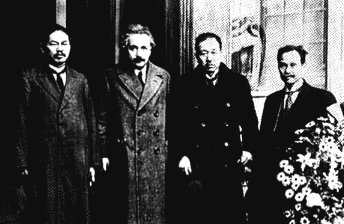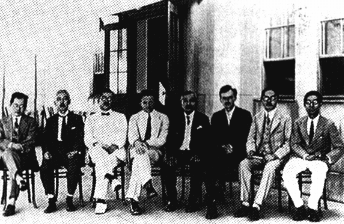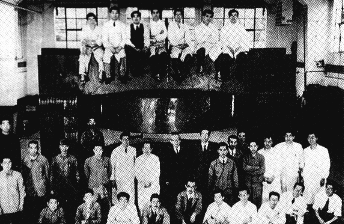
The Institute of Physical and Chemical Research, Generally known as RIKEN by the abbreviation of its Japanese name (Rikagaku Kenkyusho), is originated from the direct ancestor of RIKEN founded in 1917 as the first private scientific foundation in Japan with the financial support by the imperial Household, the Government and private organization.

Under Prof. Masatoshi Okouch, the third President, the "RIKEN sprit: was fostered by Prof. Hantaro Nagaoka (Physics), Prof. Kotaro Honda (metallurgy) and Prof. Umetaro Suzuki (Biochemistry), who are recalled as three Taros of RIKEN with deep respect; later by Dr. Yoshio Nishina, an eminent figure in nuclear physics of Japan and was succeeded in cultivating countless leading scientists, who later formed the backbone of Japan's science. The Nobel Prize laureates, Professors Hideki Yukawa and Shinichiro Tomonaga, were among them.
RIKEN has made great contribution to Japan's scientific and industrial progress, and giving rise to the formation of a strong subsidiary industrial group ad well.

RIKEN, however, encountered many difficulties in every aspect during World War II, and its laboratories and facilities suffered serious damage by the air raid of April 1945.
After the war, the postwar policy made RIKEN impossible to survive. Thus, RIKEN was dismissed in March 1948 to be reorganized as the Scientific Research Institute Ltd. or KAKEN (the abbreviation of Kagaku Kenkyusho).
The following decade was the most difficult period the Institute ever experienced; the research activities were extremely curtailed due to financial difficulties.
Meanwhile the importance of scientific research was increasingly recognized again by the public as well as the Government. Thus, the time-honored comprehensive institute was recognized in 1958 to from a nonprofit corporation, the present institute of Physical and Chemical Research, with the financial support furnished by the Government and Industry.

Since then, RIKEN has made strenuous efforts to reestablish laboratories and facilities suitable for modern scientific research, During 1966-1976, RIKEN moved all the laboratories and facilities from Komagome, Tokyo to the present Wako area of 57.8 acres, Saitama, in the neighborhood of Tokyo.
The Institute was forty laboratories and three special research groups on its Wako campus focusing their attention on nuclear physics, solid-state physics, applied physics, basic engineering, inorganic and organic chemistries, biochemistry, microbiology, and related fields of science, accommodating nearly five hundred researchers and more than one thousand guest scientists and students including more the one hundred foreign scientists.
In 1984 the Institute has established a branch station, Tsukuba Life Science Center, in Tsukuba Science City. The Center, with six laboratories, conducts research on recombinant DNA. In 1986, the Institute launched a new research system called "Frontier Research Program", and in 1990 photodynamic Research Center in Sendai.
In November 1991, construction of spring-8 (Super proton Ring-8 GeV) started on the site-Harima Science Garden City.
 Return to the very old home page of RIKEN
Return to the very old home page of RIKEN